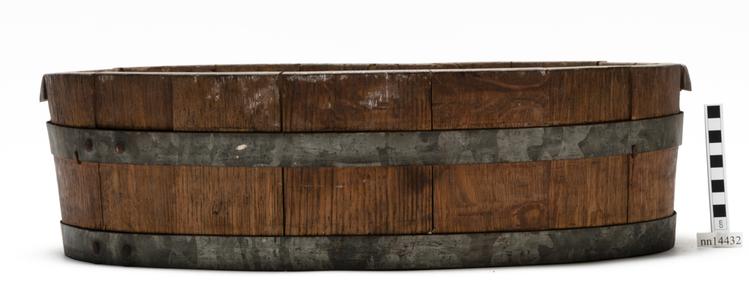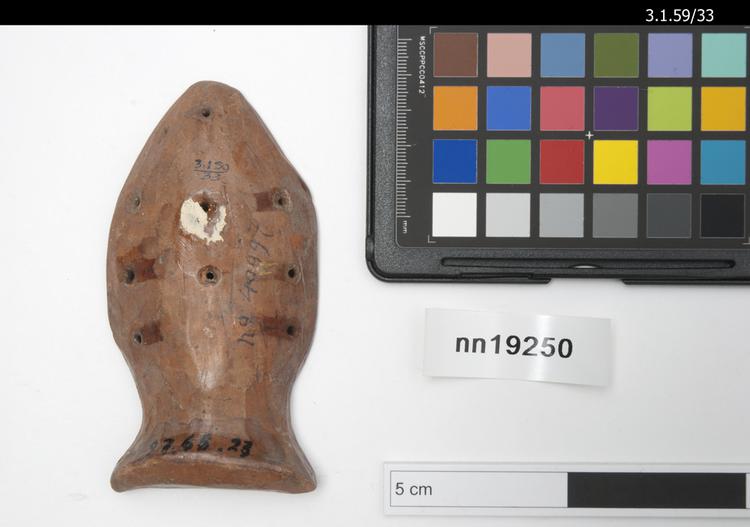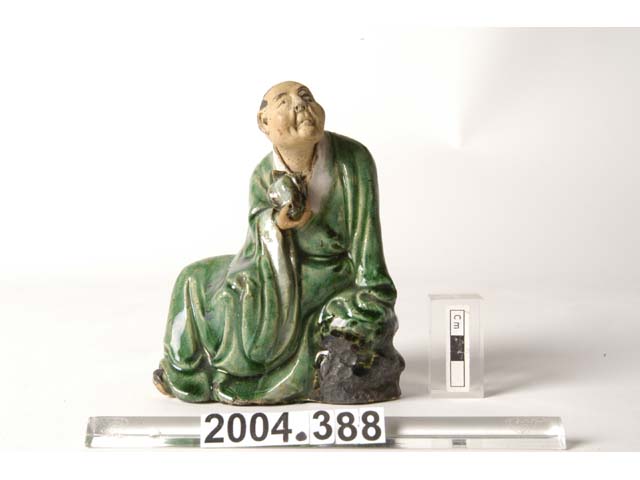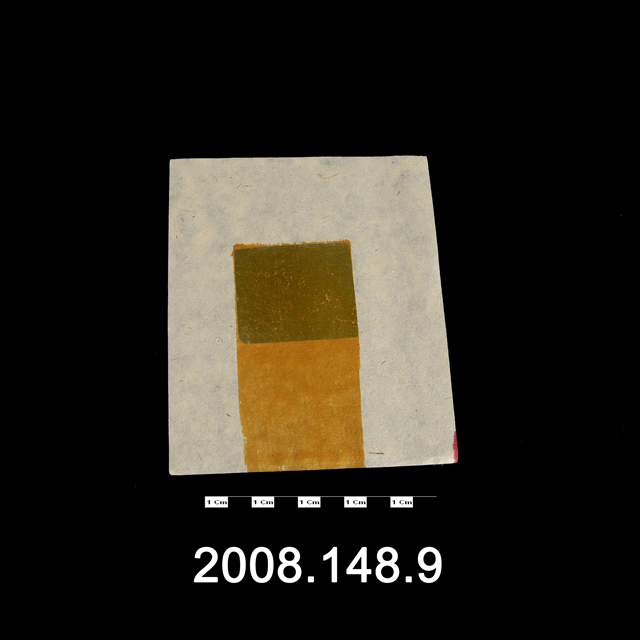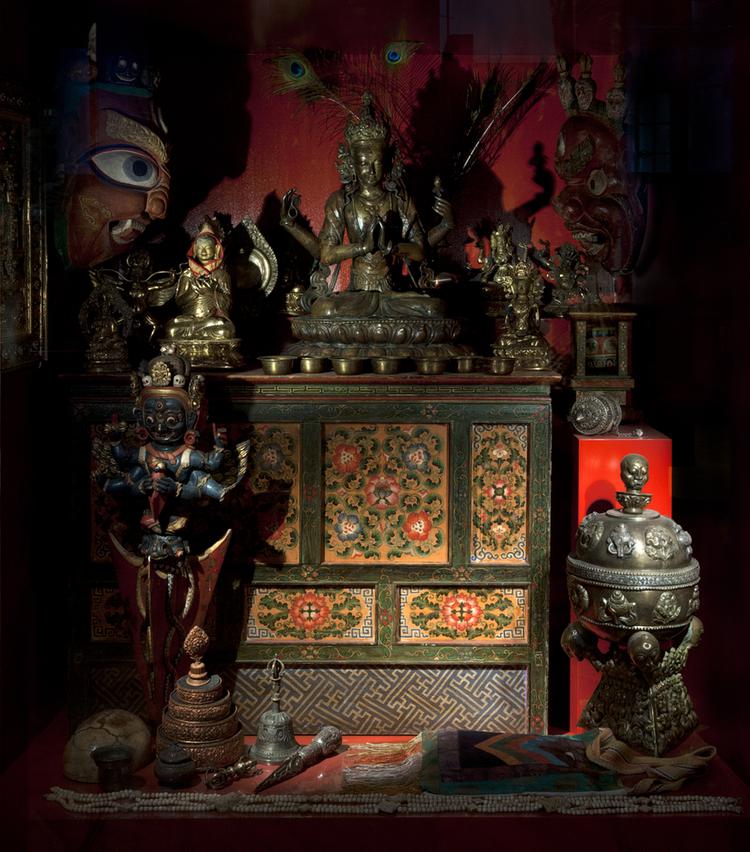
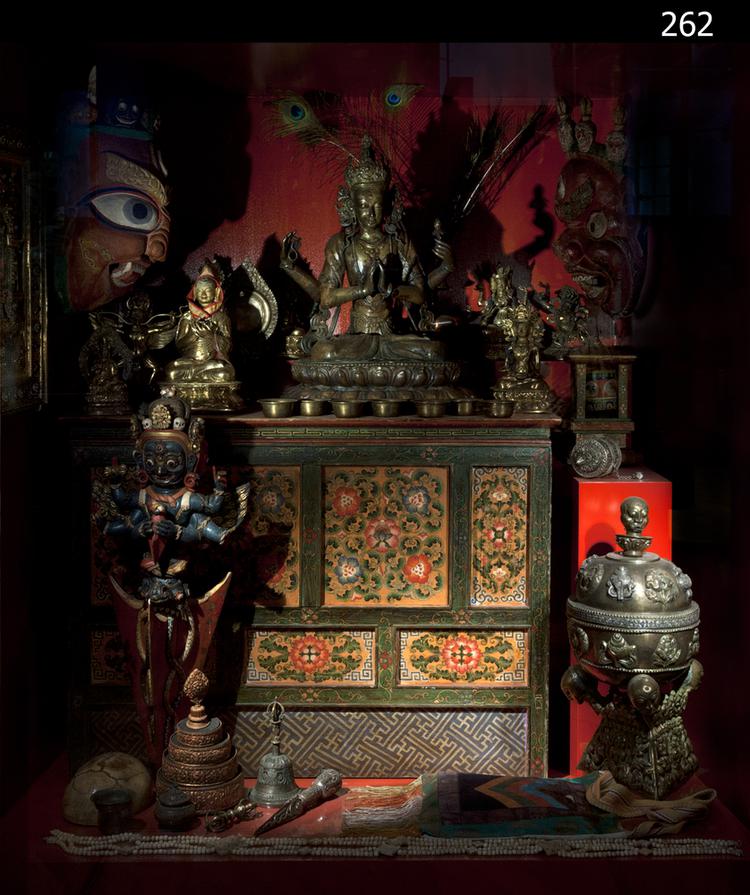
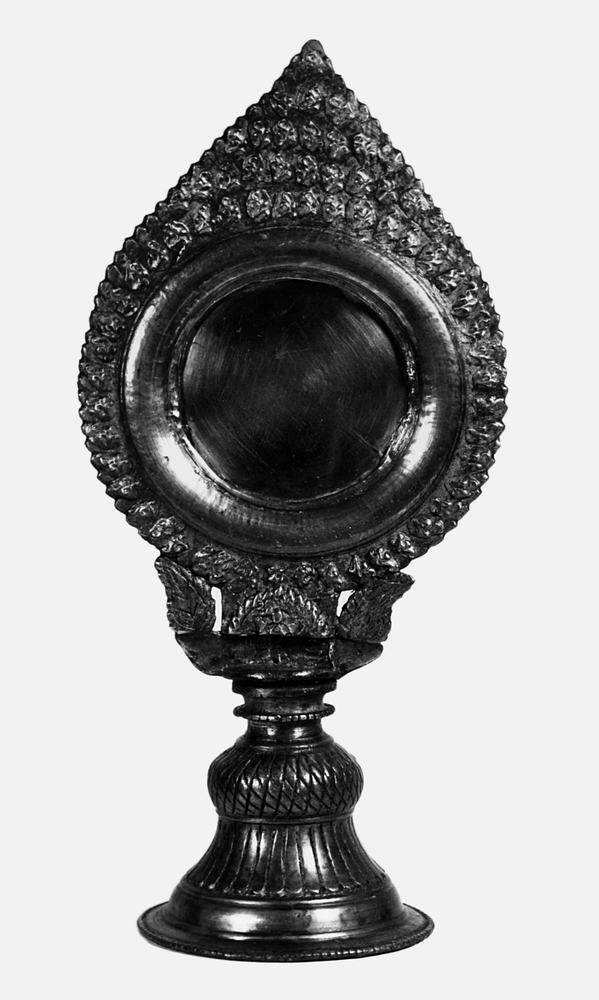
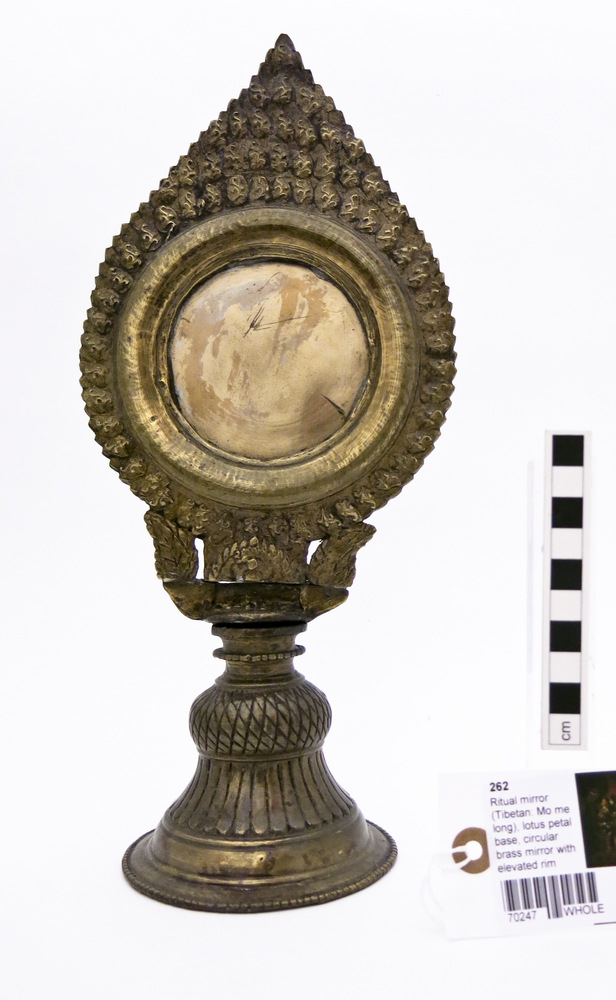
Tibetan mirror of unknown date. The base of the mirror displays an incised design of lotus petals. The base shows torus barrel moulding and narrows in diameter before joining the section surrounding the mirror. The mirror has a raised rim and is surrounded by a repeating 'halo of flames' design.
‘In Buddhism the mirror is the perfect symbol of emptiness or pure consciousness - it is clear, bright and shining, it reflects all objects impartially, and yet remains completely unaffected by the images which arise in it. It reveals all phenomena to be void in essence, like a passing show it reflects all objects of the phenomenal world but reveals them to be without substance’. See Beer, R. (2004: p.271). The Encyclopaedia of Tibetan Symbols and Motifs. To purify sculptures, they are usually bathed (bathing ceremonies Tib. khrus gsol). However not all objects such as pictures of high Lamas, thangkas etc. can be brought into direct contact with water. Cleansing can then take place with the use of a ritual mirror. The image of the object that is to be bathed will be captured in the ritual mirror and consecrated water (poured from a special pitcher = kalása) is poured over the mirror. Similar in principle is the ritual cleansing of individuals with the aid of a ritual mirror. In this ritual the subject of the cleansing ceremony will breathe at the mirror on which sesame has been sprinkled. The ritual practitioner (lama) will then through half of the sesame into the fire and the other half into the water. Ritual mirrors are also used in Tibetan death rituals. Tibetan divination mirrors and ritual mirrors: Divination mirrors are usually marked with five small inscribed circles in the centre and cardinal directions, forming the shape of a cross and symbolising the Five Buddha wisdoms. They come usually as disks with or without decorations at the rim. The above ritual mirror does not have any markings.



